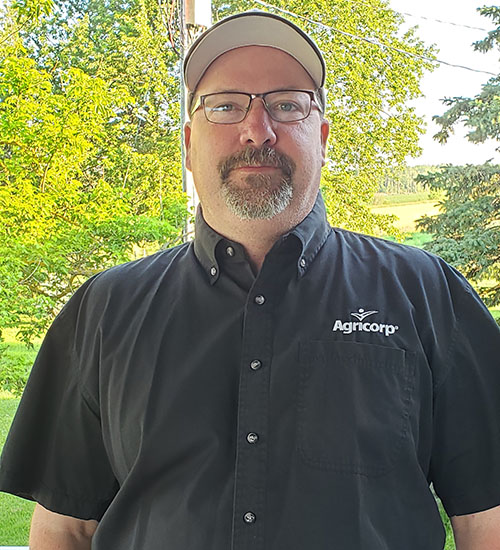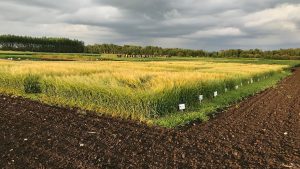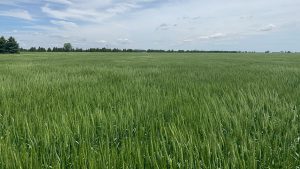GFPP update
CONVERSATIONS WITH BUSINESS EXPERTS
(J.M.) WHAT IS THE GRAIN FINANCIAL PROTECTION PROGRAM?

(S.L.) The Grain Financial Protection Program (GFPP) is a provincial program that protects producers who sell grains and oilseeds to licensed dealers, and producers or owners who store grains and oilseeds at licensed elevators. The program currently licenses 267 dealers and 372 elevator operators representing 8,157,648 metric tons of storage capacity.
Here are some program highlights that every producer should know:
- If you sell to licensed dealers, or store crops with licensed elevators, you are financially protected if a licensed dealer or elevator does not meet their payment or storage obligations
- All dealers and elevator operators must be licensed and make payments to producers and owners within specified timelines
These are some best practices for dealing with licensed dealers or elevators:
- Sell crops only to licensed dealers
- Cash their cheques within five banking days of the date the cheque is made payable
- Notify the chief inspector immediately by calling Agricorp at 1-888-247-4999 if the dealer fails to meet the required payment timelines
WHO NEEDS A LICENSE AND HOW DO FARMERS KNOW IT IS VALID?
Producers need to always deal with licensed dealers and elevator operators. All dealers and operators must post their licenses. A list of licensed grain dealers and elevators is available by clicking “See all programs” on the Agricorp.com homepage and then selecting the Grain Financial Protection Program.
Anyone who purchases canola, grain corn, soybeans, or wheat from a producer, for any purpose other than personal use, must have a grain dealer license. Any person who operates an elevator and stores grain other than their own must have a grain elevator operator license.
WHO ISSUES A LICENSE?
Agricorp appoints a chief inspector to issue these licenses. Agricorp also performs dealer and elevator inspections. These inspections ensure that dealers and elevator operators are in compliance with legislation, that producers receive payments for crops sold in a timely manner, and that producers and owners receive their stored crops when requested.
ARE THERE ANY CHANGES TO LICENSES ISSUED UNDER GFPP THIS YEAR?
OMAFRA has extended the license renewal date for dealers and elevator operators this year. The extension is for a period of 90 days after the COVID-19 provincial emergency order is lifted under the Emergency Management and Civil Protection Act.
There have been no other changes to the program or the existing provisions. Dealers and elevators still need to keep their security current, provide stored grain upon request, and are required to pay producers within 10 trading days or by the date specified in a deferred payment arrangement.
HOW ARE FEES AND CLAIMS MANAGED?
A share of the checkoff fees that producers pay when they sell their crops to licensed dealers is invested in a fund managed by the Grain Financial Protection Board. Producers or owners may submit a claim to the board to cover a portion of their loss if a dealer or elevator operator does not meet their payment or storage obligations.
If a dealer or elevator operator does not meet their payment or storage obligations, notify the chief inspector immediately by calling Agricorp at 1-888-247-4999. If producers do not notify Agricorp promptly, it could affect their claim eligibility. The Board makes all claim decisions for the GFPP. For more information on the Grain Financial Protection Board, visit www.omafra.gov.on.ca/ english/open/gfpb.html. •
HOW MUCH COVERAGE DOES GFPP PROVIDE?
This chart shows the maximum coverage for producers or owners of canola, grain corn, soybeans or wheat, according to the length of a deferred payment arrangement, if applicable.
For more information about the GFPP, visit Agricorp.com and click on “See all programs”.
| Coverage levels by length of deferred payment arrangement | |
| Length of deferral* | Maximum coverage on approved claims |
| No deferral | 95% |
| 1 to 45 calendar days | 50% |
| 46 to 90 calendar days | 40% |
| 91 to 135 calendar days | 30% |
| 136 to 180 calendar days | 20% |
| Over 180 calendar days | 0 |
| Refers to length of deferral after the tenth trading day following sales on delivery, or after 2 p.m. on the fifth trading day following sales from storage. |



















